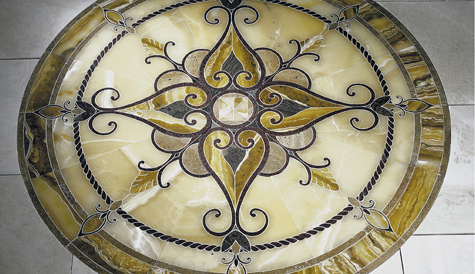
Water Jet Cutting Rock: How It Works and Why It's Revolutionary
Imagine slicing through solid granite as if it were a piece of cake, using nothing but water. It sounds like a scene from a science fiction movie, yet it is a reality in modern industry. This process, known as water jet cutting rock, is a revol
water jet cutting rock
utionary technology that leverages the power of high-pressure water, and sometimes abrasive materials, to cut through the hardest natural materials on earth. Unlike traditional methods that rely on heat or brute force, water jet cutting rock offers a unique combination of precision, coolness, and environmental consciousness. This article delves deep into the mechanics and advantages of this fascinating technology, explaining exactly how a stream of water can triumph over stone.
The Core Principle: How Pure Water Becomes a Rock Cutter
At its heart, the process of water jet cutting rock is a masterclass in physics. The fundamental principle involves pressurizing ordinary water to an astonishingly high level—often reaching 60,000 to 90,000 pounds per square inch (PSI). This ultra-high-pressure water is then forced through a tiny gemstone nozzle, typically made of sapphire or diamond, creating a coherent, supersonic stream moving at speeds over twice the speed of sound.
When cutting softer materials, this pure water jet is sufficient. However, for the immense task of water jet cutting rock, an abrasive material is introduced into the stream. Just after the water nozzle, a separate abrasive line feeds a granular substance, like garnet, into the mixing tube. The high-velocity water stream entrains these abrasive particles, accelerating them to incredible speeds. It is this combination—the erosive power of water and the grinding action of millions of hard particles—that makes the seemingly impossible task of water jet cutting rock not just possible, but highly efficient. The abrasive particles do the majority of the micro-machining, chipping away tiny fragments of the rock with relentless precision.
Unmatched Precision and Complex Geometries in Stone
One of the most significant advantages of using a water jet for cutting rock is its unparalleled precision. Traditional methods like drilling or blasting are effective for bulk material removal but are notoriously imprecise. In contrast, water jet cutting rock is a computer-controlled process (CNC), which means it can follow digital designs with an accuracy of within a millimeter.
This capability allows for the creation of intricate shapes, detailed patterns, and complex geometries that would be unthinkable with a jackhammer or saw. Whether it’s producing custom countertops with perfectly fitted curves, creating detailed inlays for architectural features, or manufacturing specialized components from stone, the precision of water jet cutting rock opens up a world of design possibilities. The kerf, or the width of the cut, is very narrow, minimizing material waste and allowing for tight nesting of parts.
The Cold Cut: Preserving the Rock’s Integrity
Heat is the enemy of many materials, and rock is no exception. Thermal cutting methods, such as plasma or laser, generate intense heat that can alter the physical and chemical properties of the material in the Heat-Affected Zone (HAZ). This can lead to micro-fractures, thermal stress, and weakened edges, compromising the structural integrity of the rock.
Water jet cutting rock is a cold-cutting process. Since the cutting action is mechanical (erosion) rather than thermal, the temperature at the cut line rarely exceeds 40°C (104°F). This cool operation is crucial for preserving the natural strength and characteristics of the stone. It prevents the formation of a HAZ, ensuring that the rock around the cut remains as strong and stable as the original material. This is particularly important for structural stone components and for preserving the natural beauty and crystalline structure of decorative stones like marble and granite.
Versatility Across the Geological Spectrum
The ability of water jet cutting rock is not limited to a single type of stone. This technology is remarkably versatile and can handle a vast spectrum of geological materials. From the relative softness of sandstone and limestone to the extreme hardness of granite and basalt, the abrasive water jet can be adjusted to tackle them all.
The key to this versatility lies in the adjustability of the system. Operators can control several parameters, including water pressure, abrasive flow rate, and the traverse speed of the cutting head. For softer rocks, a lower abrasive rate and faster speed might be used. For incredibly hard materials like quartzite or engineered stone, the pressure can be maximized, and the cutting head moved more slowly to ensure a clean, through cut. This makes a single water jet cutting rock system a valuable tool for fabricators who work with a wide variety of natural and engineered stones.
An Eco-Friendly and Safe Cutting Solution
In an increasingly environmentally conscious world, the process of water jet cutting rock stands out as a relatively green technology. Firstly, the primary cutting medium is water, which is a natural and abundant resource. While the water used is often recycled within closed-loop systems, it does not produce toxic chemicals or vapors during the cutting process.
Secondly, compared to other methods, it generates very little dust. Dry cutting and grinding of rock create significant amounts of hazardous silica dust, which poses serious health risks to operators. Water jet cutting rock suppresses this dust at the source, as the stream of water encapsulates the particles, creating a slurry that is much safer and easier to manage. This results in a cleaner, healthier work environment and reduces the need for extensive ventilation and respiratory protection. The slurry itself can often be processed to separate and reuse the abrasive material or dispose of the rock dust responsibly.
Frequently Asked Questions (FAQs)
Q1: How thick of a rock slab can a water jet cut through?
A1: The thickness capacity depends on the specific equipment and the type of rock. Industrial-grade abrasive water jets can typically cut through rock slabs up to 12 inches (300 mm) thick, and in some cases, even thicker. However, cutting speed decreases significantly as material thickness increases to maintain cut quality.
Q2: Is the edge quality left by water jet cutting smooth?
A2: The edge quality from water jet cutting rock is characterized by a matte, satin finish. It is generally very smooth, though a slight taper (wider at the top than the bottom) can occur on very thick materials. For applications requiring a polished edge, a secondary finishing process is usually performed, but the water jet provides an excellent starting point.
Q3: How does the cost of water jet cutting compare to diamond wire sawing or drilling?
A3: For simple, straight cuts or large-scale bulk excavation, traditional methods like diamond wire sawing may be more cost-effective. However, for complex shapes, intricate details, and precision work, water jet cutting rock is often more economical because it combines the cutting and shaping into a single, automated step, reducing labor and secondary processing time.
Q4: What is the primary abrasive used for cutting rock with a water jet?
A4: Garnet is the most commonly used abrasive for water jet cutting rock. It is a naturally hard, sharp, and relatively inexpensive mineral that is very effective at eroding stone. The garnet is typically used as a one-time consumable, though some systems are exploring recycling methods.
Q5: Can a water jet be used for underwater rock cutting?
A5: Yes, the principle of water jet cutting rock can be adapted for underwater use. Specialized systems are designed to operate submerged, often using surrounding water to help dampen the energy of the jet. This is particularly useful in marine construction, salvage operations, and underwater demolition, where cutting rock or concrete is required.
continue reading




